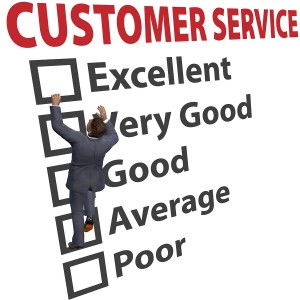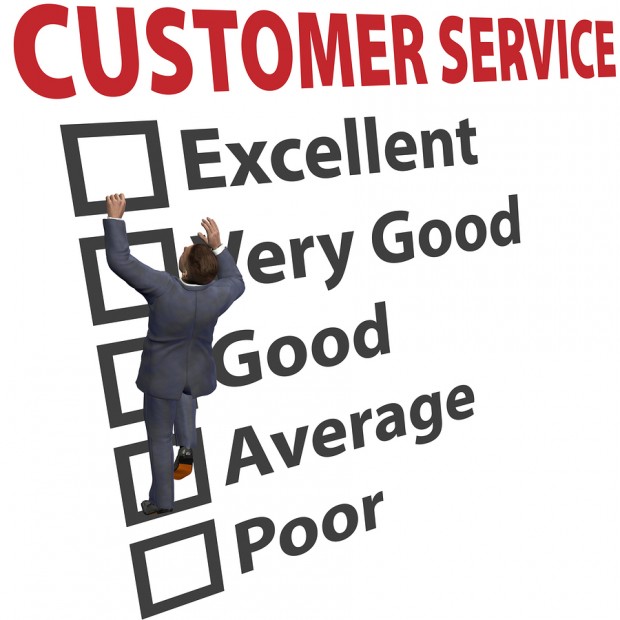
The success of any business depends upon customer satisfaction. The cost of acquisition is high. Retention is vital, particularly in today’s volatile market, where competition is driving prices down, and it’s easier than ever for consumers to compare what’s available. Loyal customers are your lifeblood, and when you put them first and deliver a great experience, they keep coming back for more. Happy customers can become evangelists for your company.
While industries like retail have elevated the idea of customer-centricity, insurers have some room for growth. According to Capgemini’s World Insurance Report, only 29% of policyholders worldwide describe their experience with insurers as positive.
Every business wants to find a way to differentiate itself from the crowd. Providing a better service to clients is a great way to do that, but how can you ensure that your company is ready and truly devoted to delivering the best customer experience it possibly can?
It’s not enough to pay lip service to the idea. A truly customer-centric culture goes beyond clever marketing or the best intentions. It must come through in the attitude and approach of your employees. It must color their interactions with customers, and inform their decision-making. It must filter through in everything that your organization does.
Listen to your customers
You need to listen to your customers and your employees before you can draw up a complete picture of what the ideal customer experience is. Walk a mile in your customer’s shoes and encourage your employees to do the same. Analyze your customer data and try to extract insights on what’s working and what isn’t. Make sure that customer data is shared across departments, and build the holistic view that you need.
Define your aims
If you sum up your company philosophy in a nutshell, and express it well, then it will be easier to spread the idea. You need a set of core values that employees can see and understand immediately. It’s important to try and make this as accessible as possible. The simpler your ideas, the easier it will be for everyone to grasp, and to keep in mind when it counts. A common definition of customer centricity will ensure that everyone is pulling in the same direction.
Communicate effectively
An inspiring speech before the annual company party, or a one-off meeting, is not going to be enough to change your company culture. The aims you define must be woven into your company fabric and reinforced repeatedly. They should be a part of your regular meetings, but be careful to ensure that their inclusion is meaningful. Use your aims to provoke discussion and channel creativity, bringing the customer’s needs to the forefront of everyone’s thinking.
Train and support
Educating your existing workforce might necessitate some formal training and extra support. Devoting time and resources shows your commitment to a culture shift, and it offers employees a morale-boosting opportunity to improve their skill sets. Greater job satisfaction, and the possibility of improvement, can motivate employees to go that extra mile for your customers.
Hire the right people and service partners
When you hire new people or forge new partnerships, make sure that their views are aligned with your vision. Partners with the right experience and employees with the right skills can help accelerate culture change. You need to ensure that your core values are discussed during the vetting process for partners. For employees a discussion of your values should inform the orientation process for new hires. Sometimes people coming in from outside your organization can enlighten a culture by bringing new insights. Savvy partners may immediately see gaps between your service offerings or intentions, and what you’re actually delivering to the marketplace.
Recognize and reward
Company culture may seem intangible, but you can influence it by recognizing and rewarding the sort of behavior and thinking that you want to encourage. The best way to reinforce positive actions and performance is to call them out to everyone. While a paycheck is expected, the true payoff is in feeling valued. Everyone craves recognition and that alone often serves as the biggest motivator.
Measure the change
The only way you can really know that your culture is changing, is to measure how effective your moves have been. You’ll want to take a close look at retention rates, cross-selling, total average spend, complaints, and general satisfaction. This might require new analytics, but it’s important that you put your theory to the test and gather practical data. It may be that there are identifiable gaps between services delivery and customer expectations. The right metrics can also reveal where you should focus your efforts for maximum value.
Culture change will not happen overnight, but with a customer-centric approach you can expect enormous potential benefits for your clients, partners, and employees, and that in turn will greatly benefit your business.





















 Market Softening Accelerates During 1/1/2026 Re Renewals
Market Softening Accelerates During 1/1/2026 Re Renewals  Berkshire Hathaway Enters Post-Buffett Era as Share Prices Fall
Berkshire Hathaway Enters Post-Buffett Era as Share Prices Fall  First Atlantic Hurricane Forecast for 2026 Suggests Season Close to 30-Year Norm
First Atlantic Hurricane Forecast for 2026 Suggests Season Close to 30-Year Norm  California Workers Comp Combined Ratio for 2024 Highest in 20-Plus Years
California Workers Comp Combined Ratio for 2024 Highest in 20-Plus Years 







